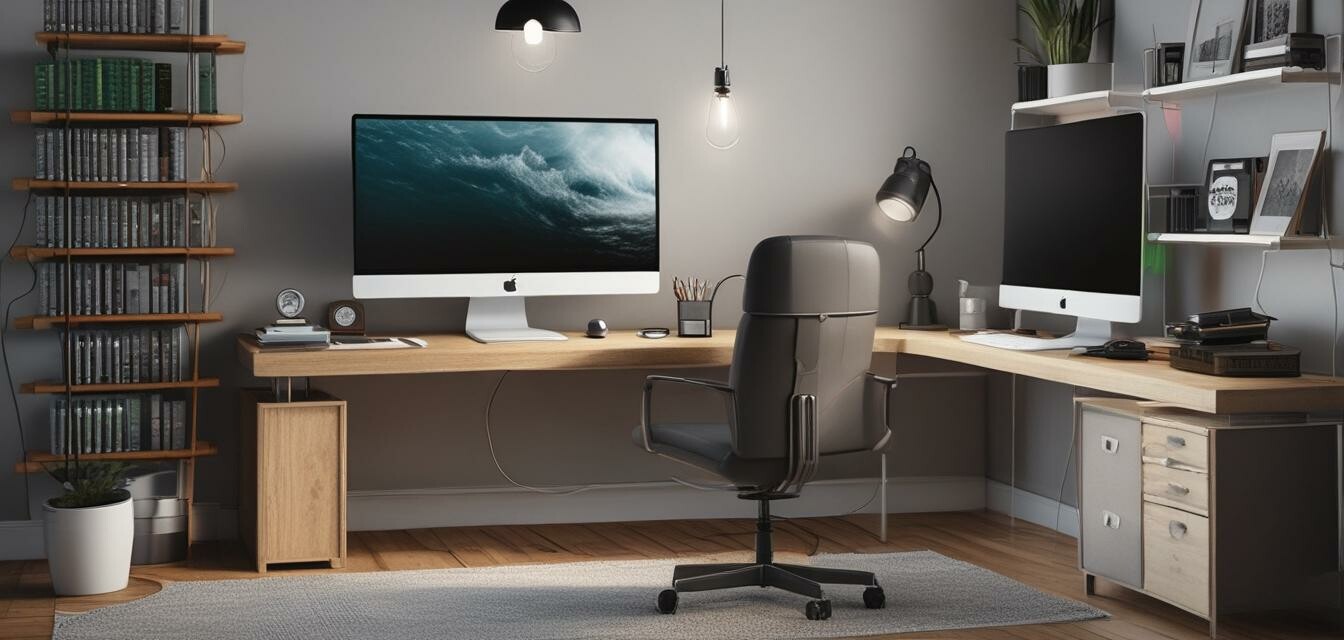
DIY Cable Management Solutions for a Neat Workspace
Key Takeaways
- Cable management is essential for a clean and efficient workspace.
- DIY solutions can be customized to fit your specific needs.
- Utilizing everyday items can significantly reduce clutter.
- Proper organization improves productivity and creates a professional appearance.
In today's digital age, a tidy home office is more important than ever. With the rise of remote work, it’s essential to optimize your workspace for efficiency and comfort. One often-overlooked aspect of a neat workspace is effective cable management. Cables can quickly turn into a tangled mess, creating an unprofessional appearance and potentially causing distractions. In this article, we’ll explore practical DIY cable management solutions that can help you organize and declutter your office, maximizing productivity.
Understanding the Importance of Cable Management
Before diving into DIY solutions, let's understand why cable management is crucial.
- Minimize Clutter: Properly managed cables reduce visual clutter.
- Enhance Safety: Avoid tripping hazards by keeping cables off the floor.
- Improve Device Efficiency: Good airflow around devices can enhance their longevity.
- Professional Appearance: A tidy setup impresses clients and coworkers in virtual meetings.
Essential Tools and Materials
To get started, gather the following tools and materials:
| Tool/Material | Purpose |
|---|---|
| Cable ties | To bundle and secure cables together |
| Adhesive hooks | To hang cables and keep them off the floor |
| Cable sleeves | To protect and conceal multiple cables |
| Velcro straps | To hold cables in place securely |
| Box cutters | For cutting cables and sleeves to desired lengths |
DIY Cable Management Solutions
Now, let’s explore some DIY cable management solutions that you can implement in your home office.
1. Cable Ties and Velcro Straps
Using cable ties and Velcro straps is one of the simplest and most effective ways to bundle your cables. Here’s how:
- Group cables by device or function.
- Use cable ties to fasten them together.
- If needed, use Velcro straps for easy adjustments or reconfiguration.
2. Wall-Mounted Hooks
Adhesive hooks can effectively keep cables off your desk and floor. To implement this solution:
- Attach adhesive hooks under your desk or on the wall.
- Loop your cables around the hooks to create organized pathways.
- This keeps excess cable length from hanging down and creates more space.
3. DIY Cable Sleeves
Creating DIY cable sleeves can help conceal and protect your cables:
- Gather materials such as fabric or old t-shirts.
- Cut the material into strips or sleeves.
- Slide multiple cables into each sleeve to keep them together.
4. Under-Desk Cable Tray
A cable tray installed under your desk can provide a designated place for power strips and excess cables. Here’s how to create one:
- Purchase or create a tray that can hold power strips securely.
- Mount it underneath your desk using screws or adhesive.
- Organize your cables by guiding them to the tray.
5. Labeling Cables
To avoid confusion later on, labeling your cables is a quick and effective solution:
- Use a label maker or sticky labels to identify each cable.
- Place the label on the end of the cable for easy identification.
Best Practices for Cable Management
Here are some best practices to maintain cable organization:
- Regularly check and tidy your cable management setup.
- Avoid overloading power strips; ensure they are not near high foot traffic areas.
- Consider upgrading cables to shorter lengths to minimize excess cable.
Conclusion
With these DIY cable management solutions, you can elevate the organization of your home office. A tidy workspace not only enhances your productivity but also creates a visually appealing environment. Start implementing these tips today and enjoy the benefits of a clean and efficient workspace!
Beginner Tips
- Start with a small area to avoid feeling overwhelmed.
- Take before and after pictures to track your progress.
- Don’t hesitate to change your setup as your needs evolve.
Pros
- Cost-effective solutions with easily accessible materials.
- Lasting impact on the appearance of your workspace.
- Improved functionality and efficiency.
Cons
- Time investment may vary based on the complexity of your setup.
- Potential challenges in scaling solutions for larger setups.
For more home office setup solutions, check out our sections on Docking Stations, Computer Peripherals, and Buying Guides.